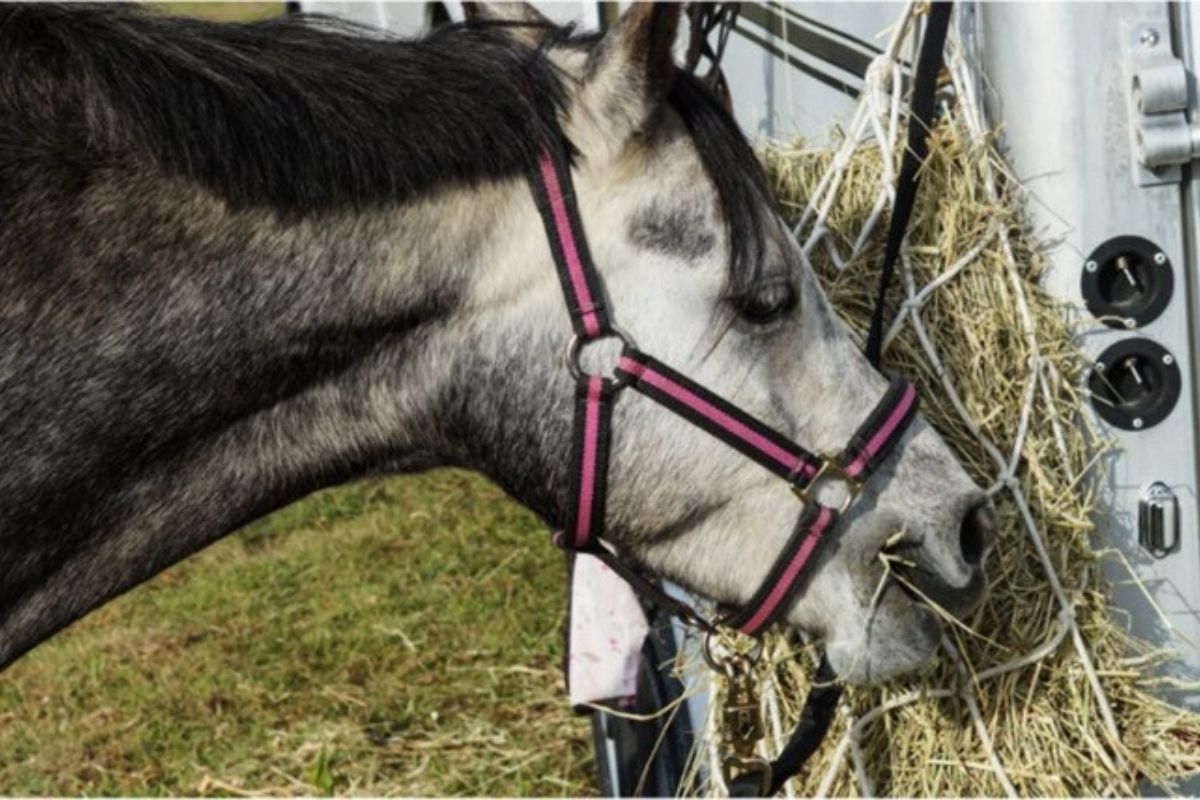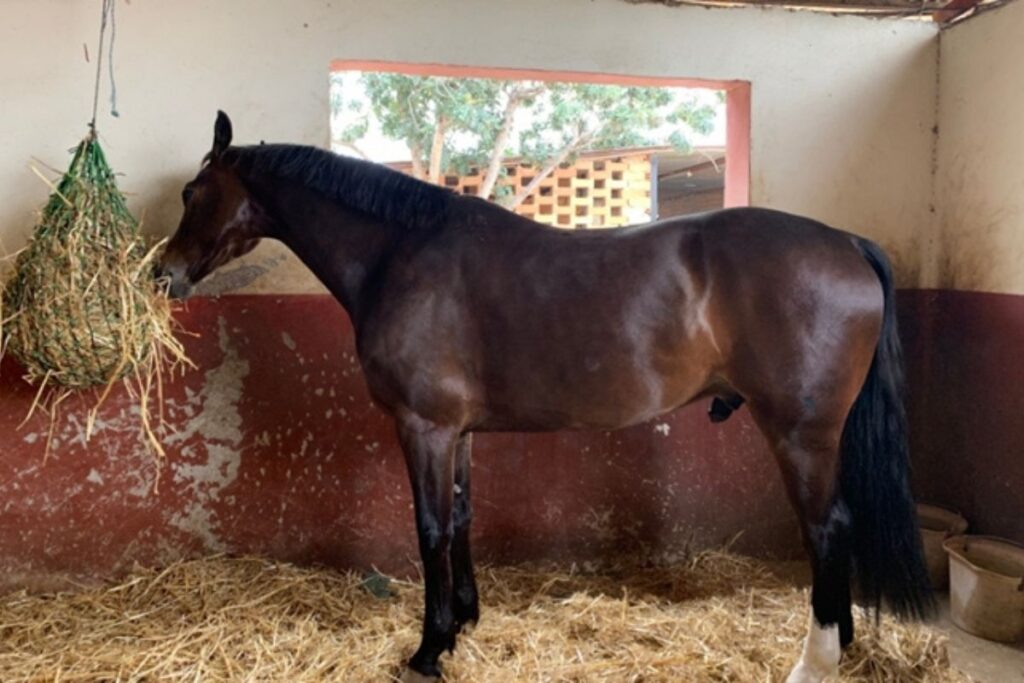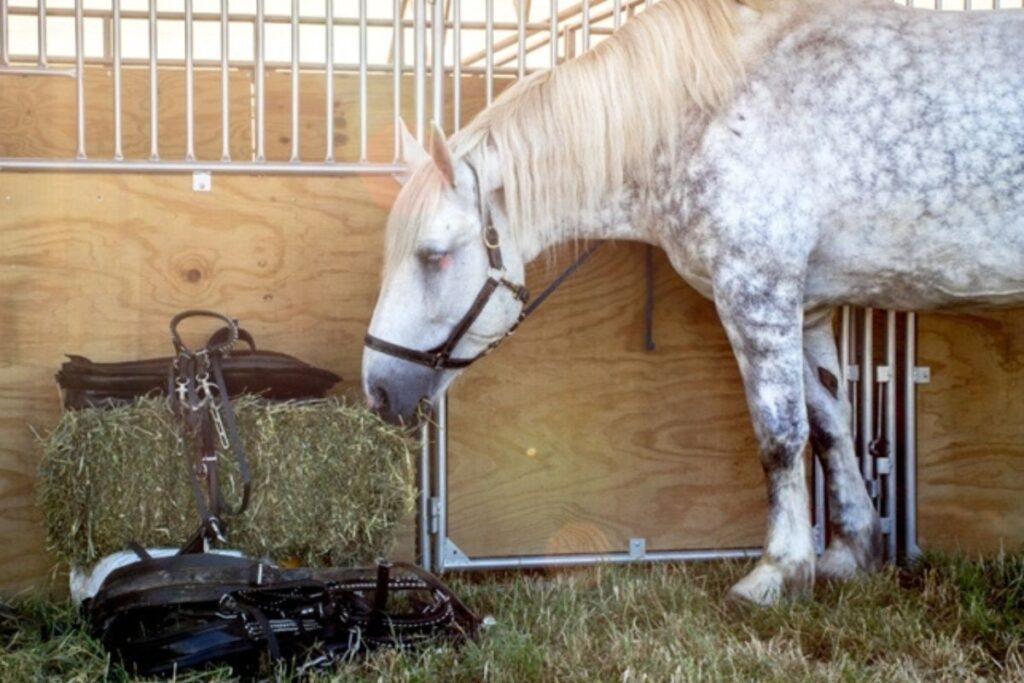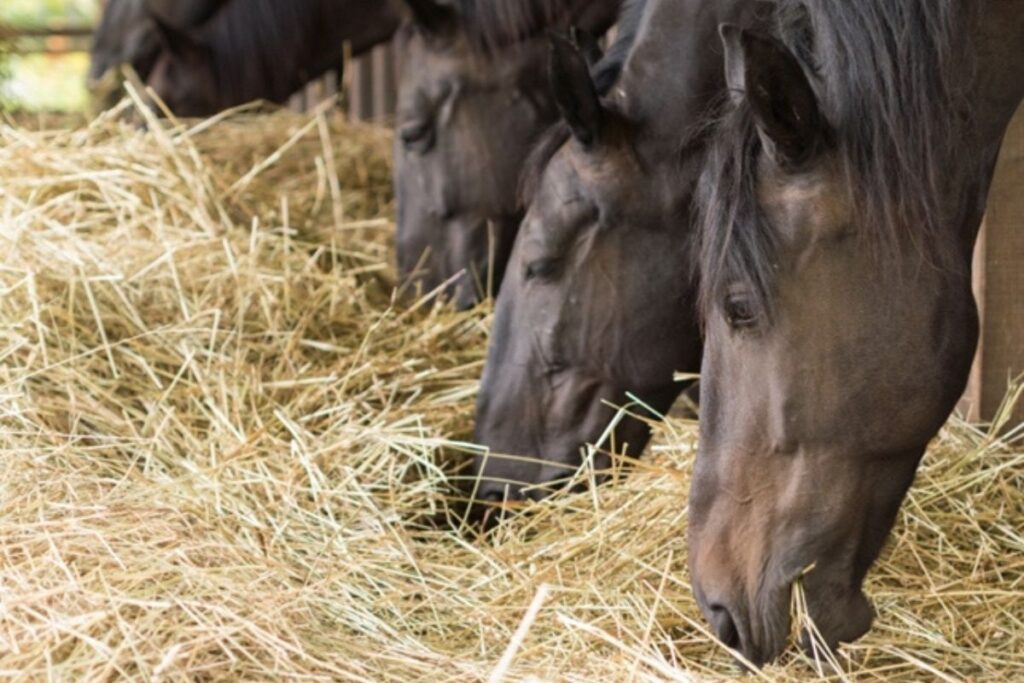Menu

The hay net has long been a controversial topic in the equine world. It can extend the eating and chewing time for the horse but is also reviled for several reasons. A team of Italian researchers has now examined the importance of the actual location of the net and have found that it really does matter how high you hang it. Something that biomechanics expert Gillian Higgins also agrees with.
The best surroundings for the horse are those that are as close to its natural environment as possible. And according to the Italian research team, the height at which the horses eat is very important in that regard. The height from which the eating takes place affects both posture and the way the horse uses its teeth.
“We know from riding that there are certain body positions that are more optimal for the horse than others. But what about when we feed them?” asks Emanuela Valle from the Department of Veterinary Science at the University of Turin in Italy.

In the study, six warmblooded horses were observed eating from three different positions: from the ground, from a knee heigh net, and from a net placed above mane.
The results showed that the lowest placed net gave the same back posture in the horses as if they ate from the ground. Here, the large back muscle Longissimus Dorsi was extended and activated. When eating from the highest placed net, in turn, the backs of the horses were noticeably altered, and the muscles were shortened.
Another parameter that was examined was the angle between the horse's jaw line and the neck. It was noticed that the angle between the two anatomical points became more and more narrow when the horse ate with its head high.
Both raised eating heights changed the neck position and the angle of the lower jaw. It became especially extreme when the neck was lifted above the mane,” concludes Emanuela Valle.
You may also like to read: 10 things your horse should not eat

According to Gillian Higgins, there are several benefits to feeding the horse in a low position, and preferably from the ground as it...

If you use a hay net, remember to position it in such a way that the horse's shoes and/or legs cannot get stuck in it. Especially the low-hanging hay nets can generate an increased risk.
"The Horse Biomechanics" by Gillian Higgins